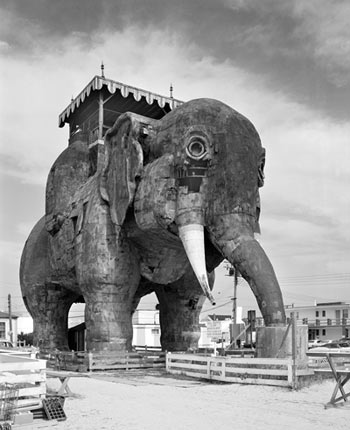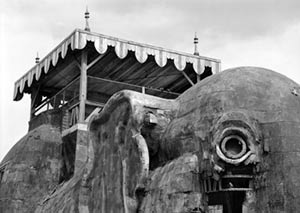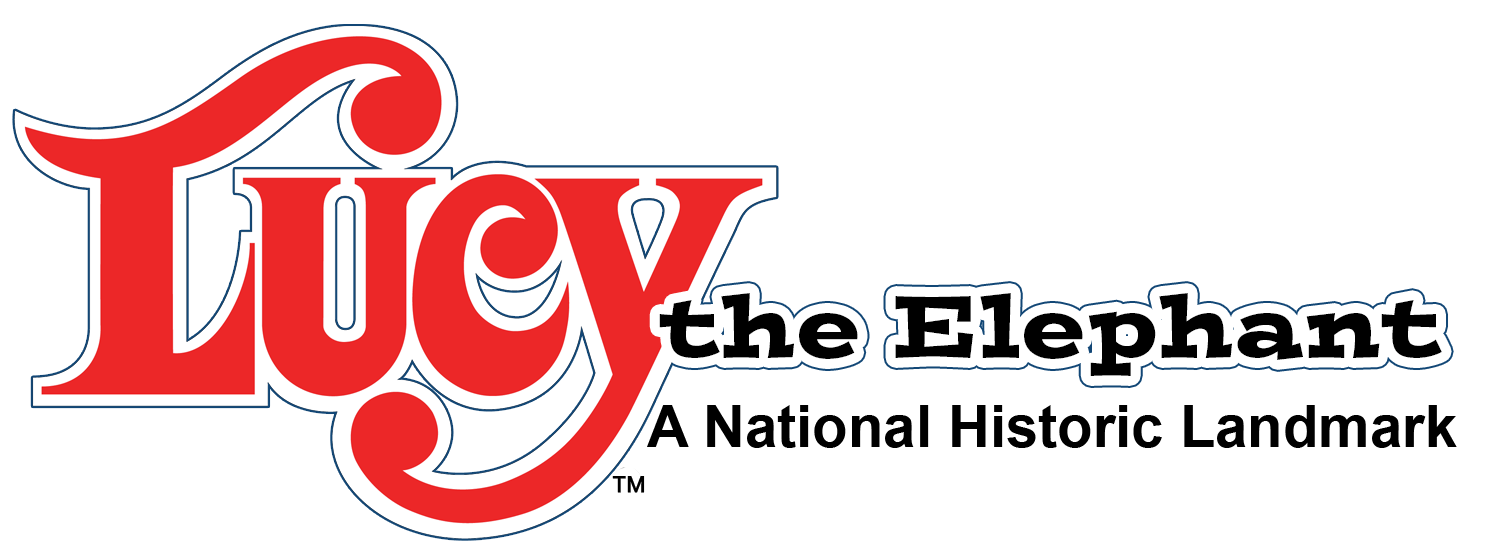 Once Lucy was firmly anchored in her new location, repaying the loan for the move and financing the restoration became the next challenge of the Save Lucy Committee.
Once Lucy was firmly anchored in her new location, repaying the loan for the move and financing the restoration became the next challenge of the Save Lucy Committee.
The publicity of moving the giant Lucy went over the national and international wire services, creating a flow of donations to the Save Lucy Committee from worldwide good wishers. The Atlantic City Race Course offered the committee a “Lucy Day at the Races” with all profits going to the committee. Atlantic City’s famous 500 Club, with its headliners, offered the committee a gala night. School children and teachers held events and chipped in, one class sent their end-of-year treasury of 67¢. Although these efforts were helpful it was necessary to seek larger sums in the form of corporate or government grants for historic preservation.
To accomplish this the Save Lucy Committee applied for and received a New Jersey non-profit corporate status and was declared a tax-deductible entity under the Internal Revenue Code. On September 8, 1971, Lucy’s application for recognition on the National Register of Historic Places was announced from Washington, D.C., opening doors for State and Federal matching grants.
The architectural firm of John A. Milner began drawings for Phase I, stabilization of the structure, and Phase II, historic preservation. The cost was estimated to be $124,000. The first grant award from the Historic Preservation program of the Department of Housing and Urban Development was in the sum of $61,750 half of the architect’s estimated costs.
Committee President Josephine Harron and Vice President Sylvia Carpenter, on advice of an area advertising executive, arranged for a unique type of loan, having 62 sponsors, who pledged to borrow $1,000 each from a local bank. They would pay the interest for a five-year period while the committee would repay the loan principal. Some donated the full pledge. Through this means the committee would be able to match the grant and start work on the restoration.
Locating a contractor who would tackle the job proved quite a task, as several turned it down as “impossible”. Finally Arthur R. Henry of Northfield, N.J., offered to accept the challenge. Herbert Sanford, an area carpenter turned dock builder, was assigned as foreman to handle the project. Even he was uncertain as to whether it would be successful due to the general deterioration of the structure. He called upon his friend, Sam Burns, to come out of retirement to help him. Together they formulated the basic plan for the restoration and work began in 1973.
 The $124,000 raised for total restoration melted away rapidly. It became necessary to insert structural steel to replace the main trusses that were in worse condition than first believed, which escalated the cost considerably. A very tedious operation was threading steel beams through a 12-inch hole in the rump of the Elephant. Other problems also appeared.
The $124,000 raised for total restoration melted away rapidly. It became necessary to insert structural steel to replace the main trusses that were in worse condition than first believed, which escalated the cost considerably. A very tedious operation was threading steel beams through a 12-inch hole in the rump of the Elephant. Other problems also appeared.
It soon became apparent that the estimated cost was not realistic and additional funds would be needed.
Replacing Lucy’s metal skin and reconstructing the Victorian-designed howdah were still in the future.

